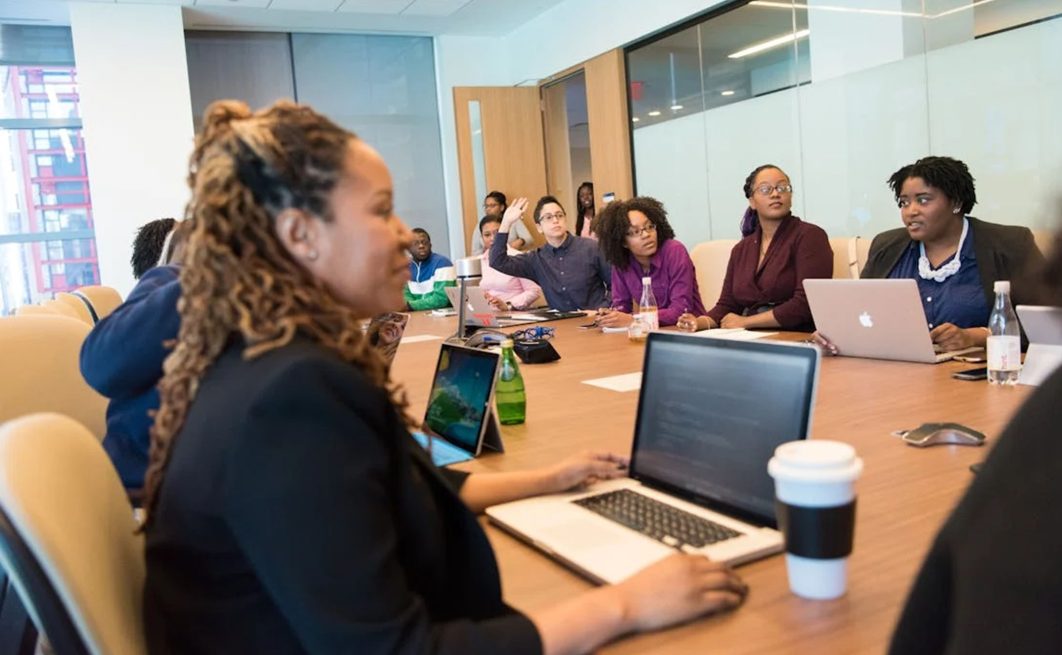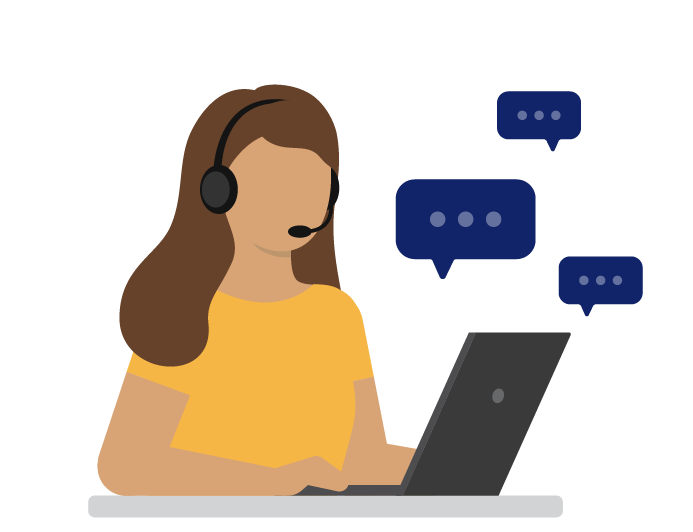Learning Agility: What it Is And How Federal Employees Can Improve it?
As the world around us continues to evolve rapidly, the ability to learn quickly and adapt to new challenges becomes increasingly vital. Nowhere is this more evident than in federal employment, where policies, technologies, and responsibilities are in constant flux.
One practical approach to adjusting to this dynamic environment is to foster learning agility. So, what exactly is learning agility, and why is it essential for federal employees to cultivate this skill? Let’s find out!
Understanding Learning Agility
Learning agility is the capability to quickly learn from experiences, adapt to new situations, and apply insights effectively. It involves skills and characteristics that enable individuals to make their way in uncertain and rapidly changing environments with confidence and effectiveness.
Learning agility involves:
- Absorbing new information rapidly
- Adapting strategies and behaviors in response to changing circumstances
- Applying past experiences and knowledge to new situations
- Embracing challenges and seeking opportunities for growth
Components of Learning Agility
- Adaptability:Adaptability involves adjusting to new situations and environments quickly. It requires assessing the situation, identifying necessary changes, and implementing them effectively.
- Flexibility:Flexibility is the ability to change course when needed and consider alternative problem-solving approaches. Flexible individuals are open to new ideas and perspectives, allowing them to easily adapt to evolving circumstances.
- Curiosity:Curiosity drives individuals to seek new experiences, knowledge, and perspectives. Curious individuals are naturally inclined to ask questions, explore possibilities, and experiment with different solutions, which fuels their learning and adaptability.
- Resilience:Resilience is the ability to bounce back from setbacks and adversity. Resilient individuals view challenges as opportunities for growth rather than obstacles, allowing them to persevere and maintain a positive attitude amidst uncertainty.
Importance of Learning Agility for Federal Employees
Learning agility is particularly crucial for federal employees due to the nature of their work environment. Federal employment often involves navigating complex regulations, policies, and procedures and adapting to changes in political priorities and technological advancements. In this dynamic landscape, learning agility enables federal employees to:
- Stay relevant and effective in their roles despite constant changes
- Respond quickly and effectively to new challenges and demands
- Innovate and find creative solutions to complex problems
- Continuously develop and grow professionally, enhancing their long-term success and satisfaction in their careers.
The Role of Experience in Learning Agility
Experience plays a significant role in developing learning agility by providing individuals with diverse situations to learn from. Through exposure to various challenges, successes, and failures, individuals accumulate knowledge, skills, and insights that enhance their ability to adapt and learn quickly in new circumstances.
Experience enables individuals to recognize patterns, anticipate potential outcomes, and draw upon past solutions when faced with similar challenges in the future.
The Impact of Past Experiences
Past experiences can shape an individual’s learning agility in several ways. For instance, encountering a challenging project that required innovative problem-solving may have taught an individual to think creatively and adapt their approach to different situations.
Similarly, navigating through a period of organizational change may have equipped an individual with resilience and flexibility in dealing with uncertainty. Each experience, whether positive or negative, contributes to the development of learning agility by providing valuable lessons and insights that can be applied in future contexts.
A Few Misconceptions
There is a common misconception that learning agility diminishes with age. However, research suggests that age is not a barrier to learning agility. While younger individuals may possess more natural curiosity and adaptability, older individuals bring valuable experiences and insights that enhance their learning agility.
It’s essential to recognize that learning agility is not solely dependent on age but rather on an individual’s willingness to learn, adapt, and grow regardless of age or experience level.
Strategies to Improve Learning Agility
It is important to understand that improving learning agility is an ongoing process that requires dedication and commitment. You must adopt proactive approaches that foster continuous growth and development. Here are some effective strategies:
Embracing a Growth Mindset
Embracing a growth mindset involves recognizing that intelligence and abilities can be developed through effort and persistence. By reframing challenges as opportunities for learning and embracing mistakes as valuable learning experiences, individuals can cultivate a mindset that fosters continuous improvement and adaptability.
Seeking Out New Challenges and Opportunities
Actively seeking out new challenges and opportunities for learning is essential for enhancing learning agility. By stepping outside their comfort zones and taking on projects or tasks that stretch their skills and capabilities, individuals can broaden their knowledge and experience and develop the resilience and flexibility needed to adapt to new situations effectively.
Seeking Feedback and Reflection
Seeking feedback from colleagues, mentors, and supervisors and engaging in regular self-reflection are powerful tools for improving learning agility. Constructive feedback provides valuable insights into areas for improvement. At the same time, self-reflection allows individuals to assess their strengths and weaknesses, identify areas for growth, and make adjustments accordingly.
Developing a Diverse Skill Set
Developing a diverse skill set enhances learning agility by equipping individuals with various capabilities that can be applied across different contexts. By continuously acquiring new skills and knowledge, individuals can adapt to evolving job requirements and organizational needs and remain versatile and effective.
Leveraging Technology and Resources for Continuous Learning
In today’s digital age, technology offers many resources and opportunities for continuous learning. By leveraging online courses, webinars, podcasts, and other educational resources, individuals can expand their knowledge and expertise in areas relevant to their roles and stay abreast of industry trends and best practices.
Implementing Learning Agility in Federal Work Settings
Incorporating learning agility into federal work settings is essential for ensuring that employees can effectively navigate the complexities of their roles and adapt to the evolving demands of their environments. Here are a few key strategies for fostering learning agility within federal agencies:
Learning Agility Within Federal Agencies
Fostering a culture of learning agility within federal agencies is critical for creating an environment where continuous learning and adaptation are valued and encouraged. By promoting a culture that celebrates innovation, experimentation, and growth, agencies can empower employees to embrace change, take calculated risks, and explore new ideas and approaches.
Lifelong Learning and Professional Development
Encouraging lifelong learning and professional development initiatives is essential for enhancing employees’ learning agility. Federal agencies can provide access to training programs, workshops, seminars, and other educational opportunities that enable employees to acquire new skills, expand their knowledge base, and stay updated on industry trends and best practices.
Training and Resources
Providing training and resources tailored to enhance employees’ learning agility is essential for equipping them with the tools and techniques needed to adapt to change effectively. Agencies can offer training programs focused on critical thinking, problem-solving, decision-making, and other skills integral to learning agility. Additionally, providing access to online learning platforms, educational materials, and mentoring opportunities can further support employees’ professional development.
Success Stories
Highlighting success stories of federal employees who have demonstrated learning agility in their roles can inspire and motivate others to embrace a mindset of continuous learning and adaptation. By showcasing examples of employees who have successfully navigated challenges, overcome obstacles, and achieved positive outcomes through their learning agility, agencies can demonstrate the tangible benefits of prioritizing learning agility in the workplace.
Final Thoughts
Learning agility is a vital skill that can empower federal employees to thrive in an ever-changing work environment. As the world continues to evolve rapidly, the ability to learn quickly, adapt to new challenges, and innovate has never been more crucial. By embracing learning agility, federal employees can position themselves for success, regardless of age or experience level.
Remember that learning agility is not a fixed trait but a mindset and skillset that can be cultivated and developed over time. It requires a commitment to continuous learning, a willingness to embrace change, and a belief in our capacity to grow and adapt.
As federal employees, let’s harness the power of learning agility to navigate the complexities of our roles with confidence, resilience, and effectiveness. Together, we can shape a future where learning is not just a means to an end but a lifelong journey of discovery, growth, and achievement.
Ready to empower your team with the skills they need to thrive in a rapidly changing environment? Explore Management Concepts today for tailored learning solutions designed to enhance the learning agility of federal employees and drive lasting success.


